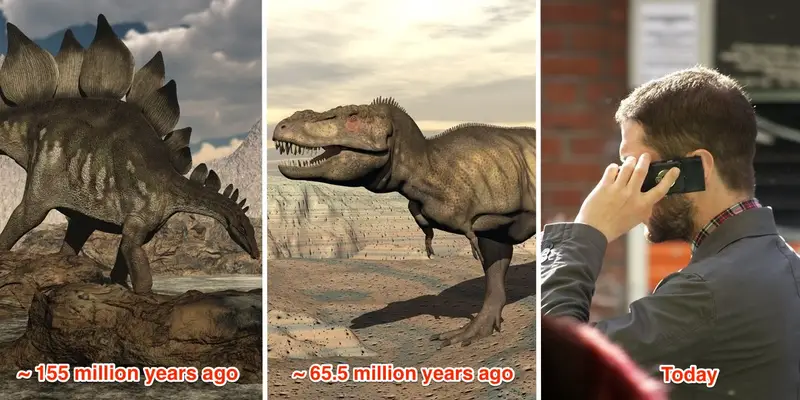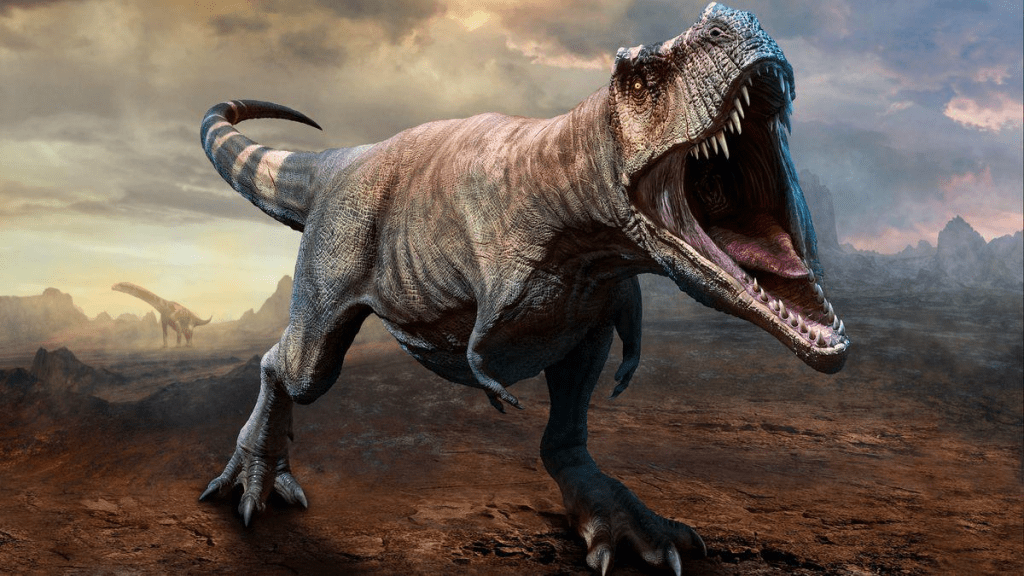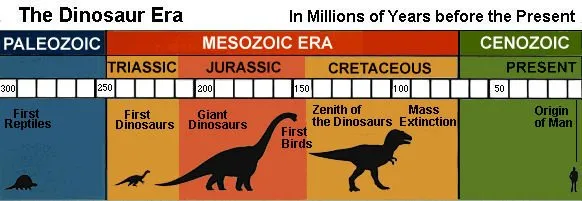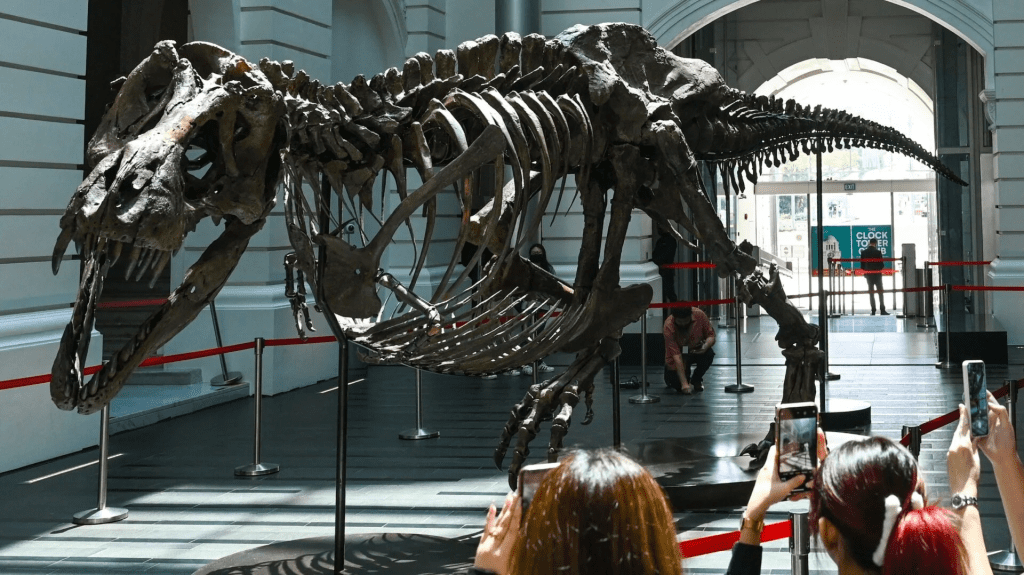When we think of dinosaurs, we tend to lump them all together as one big group roaming the Earth at the same time. It’s easy to picture a Stegosaurus casually strolling past a Tyrannosaurus rex, like they’re neighbors from different parts of the same prehistoric block. But the truth? They lived so far apart in time, they wouldn’t have even known each other existed.
Here’s the mind-blowing part: T. Rex is closer to us in time than it was to Stegosaurus.
Yes, you read that right.
Let’s break it down.

A Tale of Two Dinosaurs: Separated by Millions of Years
The Stegosaurus, that spiky-tailed, plated herbivore most of us remember from childhood books and toys, lived roughly 155 to 145 million years ago during the late Jurassic period. It was one of the earlier iconic dinosaurs, known for its small brain, distinctive back plates, and massive tail spikes (aka the “thagomizer”).

Fast forward way forward and you’ll get to the Tyrannosaurus rex, the giant predator that dominated the Earth 67 to 65 million years ago during the late Cretaceous period. That’s an 80-million-year gap between the two.
To put that into perspective, 80 million years is longer than the time span between the extinction of the dinosaurs and right now. That means the T. Rex missed Stegosaurus by such a huge margin, it might as well have been from a different planet.
Video:
The T-Rex Lived Closer to Us Than the Stegosaurus! Time Travel!
So Where Do Humans Fit In?
Modern humans Homo sapiens only emerged around 300,000 years ago. If we consider that T. Rex went extinct 65 million years ago, then yes: you are over 65 million years closer in time to a T. Rex than a T. Rex was to a Stegosaurus.
That’s one of those jaw-dropping facts that reshapes how we think about Earth’s long and complex history.

Why This Matters
This isn’t just a quirky piece of trivia. It says a lot about how deep time works a concept that can be hard to grasp. The Earth is around 4.5 billion years old, and the age of dinosaurs spans a huge stretch of time within that. Dinosaurs weren’t just a single era they evolved, diversified, and died out over tens of millions of years.
Video:
What Do We Know About Dinosaurs?
So while cartoons might show Stegosaurus running from a T. Rex, the reality is far more interesting. It reminds us just how ancient and vast Earth’s timeline really is and how brief our human existence has been on this planet.
The Bigger Picture: Time Is Not What It Seems
If there’s one takeaway here, it’s this: history isn’t just about what happened it’s about when.
Thinking of T. Rex as ancient is totally valid, but it’s even crazier to think that in the grand scheme of Earth’s timeline, humans and dinosaurs are practically roommates compared to some of the stretches between dino species themselves.
So next time someone mentions T. Rex and Stegosaurus in the same breath, feel free to drop this fact: T. Rex and Stegosaurus are more like historical strangers and T. Rex is practically our next-door neighbor by comparison.

Final Fun Fact:
If we compressed Earth’s 4.5-billion-year history into a single year, modern humans would only appear in the last few minutes of December 31 long after the dinosaurs had already come and gone.
Mind. Blown.


